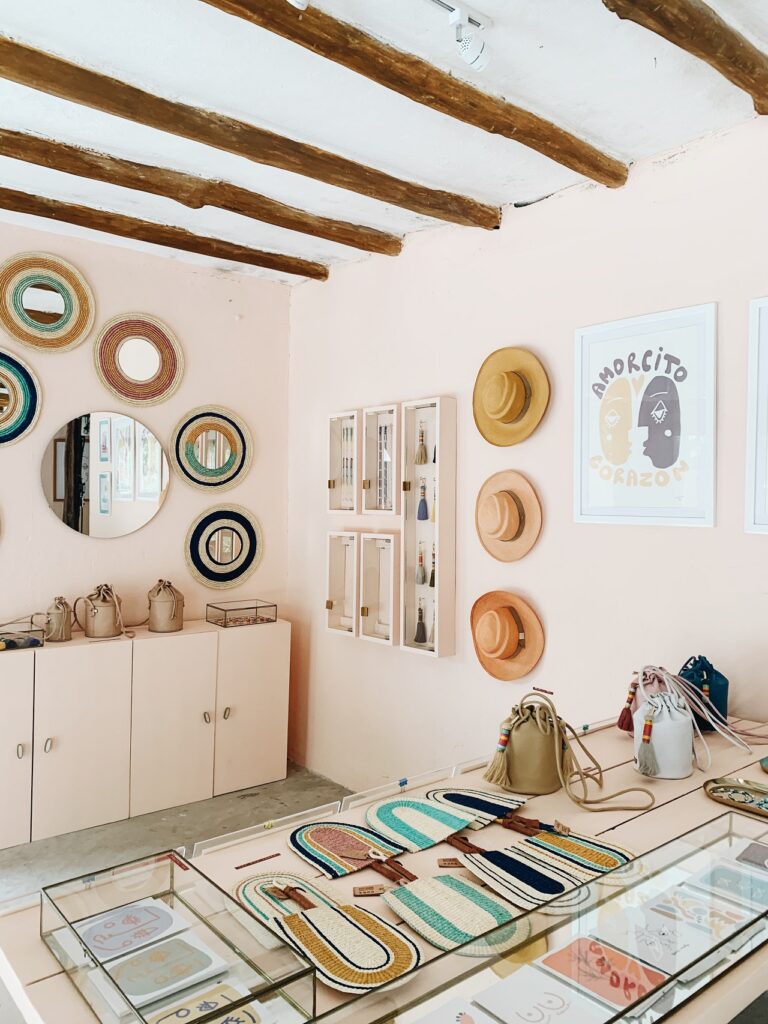Retail design can be defined as the utilization of various skills and disciplines to design and create retail spaces for a unique brand experience. It can be categorized as a subset of interior design and architecture, with elements of various fields, such as graphic design and advertising.
To create a successful retail space that is in line with the image of a brand, a specialized retail architect is often hired. Offering the most fitting spatial layouts for the business, these professionals understand how to manage customers, employees, automated elements, and products in any given space.
Continue reading to learn more.
How Retail Design And Architecture Impact Brand Image

The impact of retail design on how the public perceives a brand cannot be understated. A seamless blend of practicality and visual flair is essential in modern times when every brand under the sun is vying for attention.
From the very inception of the concept, the basic principles of retail design have helped shape certain design elements synonymous with particular brands. You can observe this in flagship stores of any major brand, sharing color schemes, lighting, product display philosophies, and other architectural elements.
The idea behind this philosophy is to create something that begins to resonate among the general populace as being specific to the brand. If successful, these design elements can elevate a store beyond simply a place to shop, almost making it a tourist attraction in all but name. Foster’s Crossrail Place retail and roof garden is a good example of this.
In addition to driving more foot traffic, this thematic representation of a brand across each of its stores aims to entice visitors into buying products. And in nearly every case, these attempts at attracting customers are very subtle and deliberate in design, using the environment to the fullest for this.
As a simple example, let’s look at how supermarkets use specific design choices to improve brand image and drive sales. Supermarkets and grocery stores usually place essentials like milk near the rear end of the store to maximize the browsing time of each customer.
While browsing these stores, the colorful branding and easy-to-navigate aisles direct each customer to the items they are most likely to purchase. Combined with a pleasant ambiance, easy accessibility through signs and markers, and an effective self-checkout system, supermarkets create an inviting experience for every shopper.
Responsibilities Of A Retail Architect
You may be wondering: what does an architect do in retail spaces? The main role of a retail architect is to supervise the exterior of the retail space to draw as many eyes toward the store as possible. A retail architect will create plans for the design choices that synergize with a particular brand while being mindful of the needs of customers and employees.
Moreover, retail architects are often knowledgeable in the art of designing both interior and exterior retail spaces. This expertise leans into the ability of a retail designer, with whom a retail architect can collaborate to finalize the exterior and interior design approaches.
As a result of this collaborative effort, the brand can begin constructing the iconic design of its flagship store. This was followed closely by the architects of the Free People Shop in Tokyo, Japan.
Under the keen eyes of retail architects and designers, the interiors and exteriors follow the architectural design concept approved by the brand. Eventually, their shared vision is brought from the design sheets to reality on time and within the specified budget.
Difference Between Retail Architects And Retail Designers
Retail architects are different from retail designers in that they tackle fundamentally different aspects of design.
Consider retail architects to be the jack-of-all-trades when retail design is considered, as they tackle both interior and exterior portions of retail spaces. Their building design and engineering background, along with a clear understanding of approaching interior and exterior spaces, make them highly flexible in designing retail stores. That said, their knowledge of interiors may not be as extensive as that of retail designers.
Retail designers possess more specialized knowledge in that they have a greater understanding of how to approach interior design effectively. A vast majority of customer and employee interaction occurs inside the store, and a retail designer is always considerate of the fact.
As a result, interior design principles are often handled more effectively by retail designers. And as a consequence of their better grasp of these principles, retail spaces designed by them balance eye-catching designs with practical considerations.

Becoming A Retail Architect
As a career option, retail architects play an important role in the retail industry. It’s a vital position that can be a viable primary or alternative career option for architects.
Much like the architects who oversee the construction of office spaces and commercial property, the role of a retail architect extends beyond the drawing board. You will scarcely find a retail architect who isn’t present at the construction site of a flagship store.
Here’s everything you need to know about building a career in retail architecture.
1. Required Qualifications And Skills
So, if you are seeking a career in retail architecture, you will need a professional degree in architecture. A Bachelor’s Degree can be beneficial for your job-seeking efforts.
Additionally, you will be required to have a voluntary certification through the National Council of Architectural Registration Boards. And to be a fully licensed architect in an architectural firm, you must have at least three years of experience in a related internship or training program.
As far as the skills that a retail architect must possess, they must be adept at the following:
- Strong communication skills
- Strong analytical skills
- The ability to visualize designs effectively
- The ability to organize designs efficiently
- Strong creative drive
- Knowledge of computer-aided design and drafting (CADD)
- Command over building information modeling (BIM) software
Apart from these vital skills, a retail architect is also expected to operate document managing and graphic imaging software.
2. Career Roadmap
The process of building a successful career as a retail architect can be described as a four-step process. These steps include earning a degree in architecture, retail design academics, training for experience, and clearing the licensing exam. As mentioned earlier, becoming a fully licensed retail architect can take several years.
Let’s take a closer look at the steps to become a retail architect.
Step 1. Earn A Degree In Architecture
A professional degree in architecture is the first step that you will likely take toward a career as a retail architect.
Some students opt for a Bachelor of Architecture (B. Arch.) degree, but a related degree with a Master of Architecture (M. Arch.) can also suffice. The point of these programs is to become well-acquainted with every aspect of architecture, such as architectural fundamentals, building materials, cost management, and historical architecture.
In addition to the basics, you may also want to develop a secondary skill that benefits you in the future. Feel free to choose from the list of skills detailed in the previous section.
Step 2. Retail Design Academics
After gaining a thorough understanding of architecture, you must start your retail design studies.
Studying interior design and product merchandising is a vital pillar for students to understand the importance of retail designs and brand requirements. These academics include case studies as well, offering examples of how various businesses use color schemes, building layouts, and effective lighting to attract customers.
Note that not every architectural degree programs include retail design, so you may want to look at the coursework beforehand. That said, if you already have an architectural degree without having studied retail design, you can opt for a separate certificate as well.
Step 3. Training For Experience
Once you have earned a degree in architecture, it’s time to find a position in an internship or training program. This is when you will develop most of your secondary skills to gain an edge over the competition.
You need not necessarily be picky when training as a fresher, as any accredited architectural organization will suffice. The important part of this three-year-long training period is to gather as many secondary skills as possible.
Step 4. The Licensing Exam
The final step in every retail architect’s journey is the Architect Registration Exam (ARE). By clearing this examination, you will be certified to work as a fully licensed retail architect adept in schematic design, site planning and design, and system building.
Once you have cleared the exam, you can opt to study the field further or begin working as a licensed retail architect. Both approaches have their merits, so feel free to consider which approach works best for you.

Retail Design Architectural Considerations
Retail design is highly deliberate in nature, involving various considerations that make certain design elements iconic for a particular brand. These considerations have a tangible effect on the way a customer shops in a store, using proven data to maximize the likelihood of them making a purchase.
A successful store design becomes popular almost instantaneously, thanks to its effective space utilization, understanding of the target group, and highlighting display areas. Let’s explore these design considerations in detail.
1. Effective Space Utilization
Space utilization is a design aspect that is central to the success of any retail store. This consideration is dependent on both the store layout and the retail designer’s ability to use the allotted space well.
A retail designer or architect has to work with six basic store layouts, as detailed below:
- Straight plan
- Diagonal plan
- Curved plan
- Pathway plan
- Geometric plan
- Varied plan
With these layouts in mind, the architect must create a store design that highlights the products while keeping the space easy to navigate. It’s also important to keep safety measures like emergency exits and high-visibility icons present throughout the store.
2. Product Display Area
The manner in which products are displayed handles much of the heavy lifting of making products appealing to customers. This makes the role of internal ambiance and external branding extremely important.
Retail designers must keep the lighting, sound, and color scheme close to what is the most recognizable with the brand. They must implement various lighting methods, such as natural lighting, layering, and mixing light intensities, to highlight particular products or services.
Moreover, the colors they use must stand out from those of the walls and surrounding decor. And since these elements may be permanent fixtures that won’t be swapped out frequently, it’s important to keep these colors neutral.
As for exterior design, branding, and iconography should directly lead the consumer towards the interior. All the design elements for the exterior branding should be clear, concise, and consistent to attract potential and repeat customers.
3. Other Considerations
Retail architects must include the details of the structure of the store, architectural materials, required tools, and finishes. They must also keep the safety and accessibility features in mind to comply with the safety standards as required by the local government.
Some of the details that a retail architect must include for a retail store are as follows:
- Details of nearby buildings, curbs, streets, etc.
- All the above-ground features
- Spot elevations, grades, and contours
- Floor plans for all the levels in the store
- Site plan that details building orientation, shading, access routes, etc.
- A topographical site survey that is compliant with local standards
- Slopes, materials, roof-mounted equipment, drainage, etc., mentioned on the roof plan
Final Words
Building a retail store for the modern consumer has always been a multi-faceted topic with several considerations. And while retail design has become more complex over the years, the fundamentals remain the same.
Since the inception of the concept, retail architects have been working on the same basic principles to improve the retail store experience for brands. Much of the iconography associated with store chains is made possible by retail architects after several iterations, collaborations with retail designers, and customer and employee considerations.
Thus, the combination of the vision of the brand and the architect’s creativity has resulted in retail stores becoming more modern and customer-friendly than ever.


